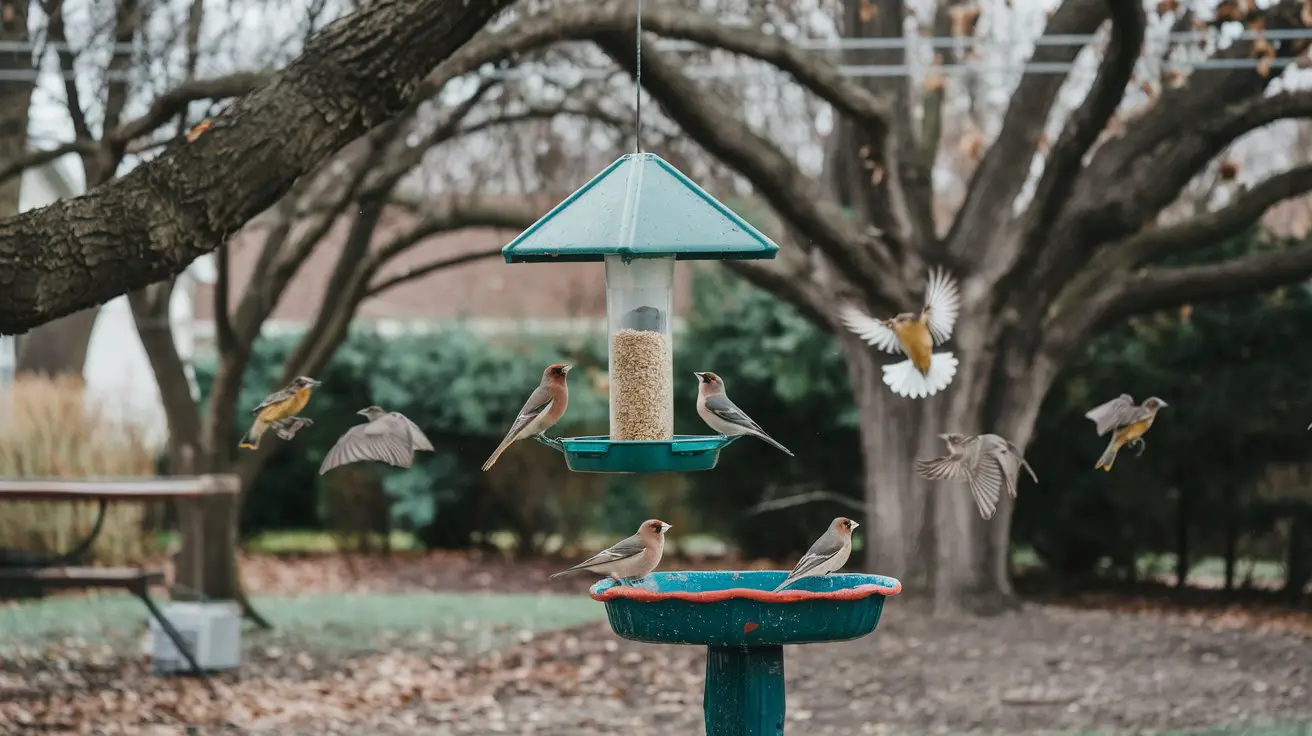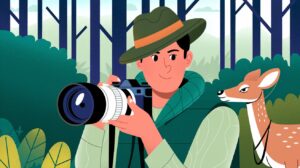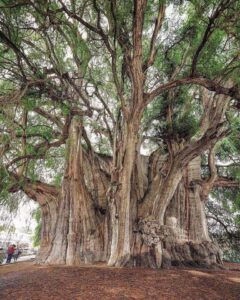As an avid birdwatcher, I’ve spent years transforming my backyard into a haven for our feathered friends. Through trial and error, I’ve discovered the most effective ways to create a bird-friendly environment that attracts a diverse array of species. In this article, I’ll share my expertise on setting up the perfect backyard sanctuary, from selecting the right feeders to installing inviting bird baths. Whether you’re a seasoned birder or just starting out, these tips will help you create a welcoming space that brings the joy of birdsong and colorful plumage right to your doorstep. Let’s explore how to turn your outdoor area into a thriving oasis for our avian visitors.
Creating a Bird-Friendly Backyard Habitat
Creating a bird-friendly backyard is an exciting way to attract a diverse array of feathered visitors while supporting local ecosystems. As I’ve discovered through my bird-watching adventures, transforming your outdoor space into a haven for birds requires careful planning and execution.
Assessing Your Space
Before diving into the project, I always recommend taking stock of your existing landscape. According to Audubon, understanding the sun/shade patterns and soil conditions in your yard is crucial for creating an effective bird habitat. This initial assessment helps determine which native plants will thrive in your specific environment.
Planting for Success
The cornerstone of any bird-friendly backyard is a diverse selection of native plants. These provide essential food sources, nesting materials, and shelter for birds throughout the year. As noted by Birds & Blooms, incorporating a variety of species that offer year-round flowers, fruits, and seeds ensures a continuous food supply for birds and other pollinators.
Adding Essential Features
To truly make your backyard a bird paradise, consider incorporating these key elements:
- Water sources: A small pond or birdbath provides crucial hydration and bathing opportunities.
- Shelter: Include trees, shrubs, and climbing vines for cover and nesting sites.
- Feeding stations: Install a variety of the best bird feeders to attract different species.
Remember, creating a bird-friendly backyard is an ongoing process. Be patient, observe, and adjust your approach as needed. With time and care, you’ll soon find your outdoor space teeming with avian activity, providing endless bird-watching tips and opportunities right outside your door.
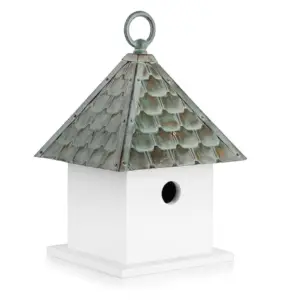
Good Directions BH206WWHT Bird House Bungalow
Adds aesthetic shelter for small birds while attracting a variety of species.
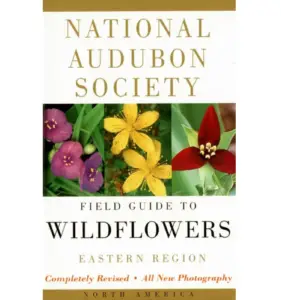
Audubon Native Plant Selection Guide
Helps readers choose native plants suited to their region.
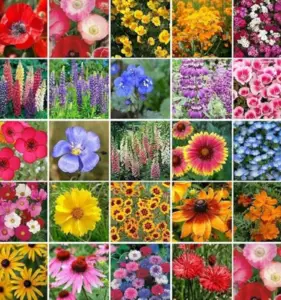
Eden Brothers Pacific Northwest Wildflower Mixed Seeds
Seed mix to attract pollinators and provide natural bird food.
Choosing the Best Bird Feeders for Different Species
Creating a bird-friendly backyard starts with selecting the right feeders. Different bird species have unique preferences, so offering a variety of feeder types can attract a diverse avian community to your yard.
Platform and Hopper Feeders
Platform feeders are versatile options that attract a wide range of birds. According to All About Birds, these open trays appeal to doves, cardinals, and woodpeckers. However, they’re also vulnerable to squirrels and weather. Hopper feeders, resembling little houses, offer better protection for seeds and are favored by cardinals and grosbeaks.
Specialized Feeders
For finch enthusiasts, tube feeders filled with nyjer seeds are ideal. These slender feeders attract goldfinches, siskins, and other small songbirds. Suet feeders are perfect for attracting woodpeckers, nuthatches, and chickadees, especially in colder months.
Placement and Maintenance
When setting up your bird-friendly backyard, consider feeder placement carefully. Experts recommend positioning feeders either within 3 feet or beyond 10 feet of windows to minimize collision risks. Regular cleaning every 2-4 weeks is crucial to prevent disease spread among your feathered visitors.
By offering a mix of feeder types and following these bird-watching tips, you’ll create a vibrant, diverse avian haven in your backyard.
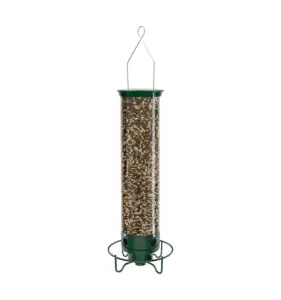
Droll Yankees Platform Feeder
Open tray feeder ideal for ground-feeding birds like doves and cardinals.
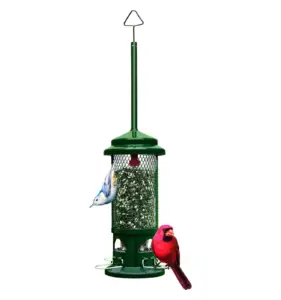
Squirrel Buster Standard Squirrel-proof Bird Feeder
Keeps squirrels at bay, great for small birds.
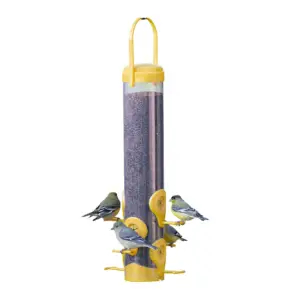
Perky-Pet Finch Feeder
Tube feeder designed for goldfinches and other small songbirds.
Setting Up Bird Baths and Water Features
Creating a bird-friendly backyard isn’t complete without a water source. Bird baths and water features are essential for attracting a diverse array of feathered friends, including species that may not visit feeders. Let’s explore how to set up these avian oases effectively.
Choosing the Right Bird Bath
When selecting a bird bath, opt for shallow designs that mimic natural water sources. The ideal depth is no more than 2 inches at the center, with a gentle slope for easy access. Place flat rocks or branches in the water to provide perches, allowing birds to drink without getting wet.
Location Matters
Position your bird bath in a shaded area to keep the water cool and prevent rapid evaporation. Ensure it’s near shrubs or trees for cover, but maintain a clear line of sight for birds to spot potential predators. Ground-level baths attract larger species, while elevated ones provide security for smaller birds.
Maintenance and Enhancements
Regular maintenance is crucial for a healthy bird-friendly backyard. Change the water every 1-2 days to prevent the buildup of contaminants. Consider adding a dripper or small fountain to create movement, making the bath more enticing. For year-round appeal, use a heater in winter and add ice on scorching summer days.
By incorporating these bird-watching tips and selecting the best bird feeders alongside well-maintained water features, you’ll create an irresistible haven for our avian neighbors.
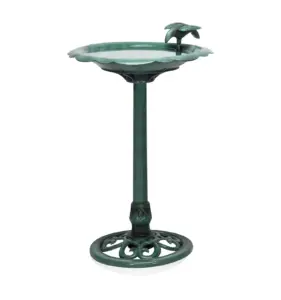
Alpine Corporation Ceramic Bird Bath
Shallow, attractive design that appeals to a variety of bird species.
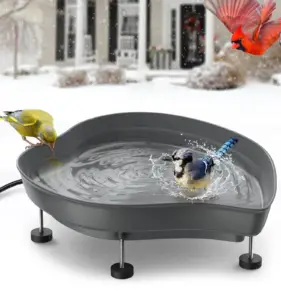
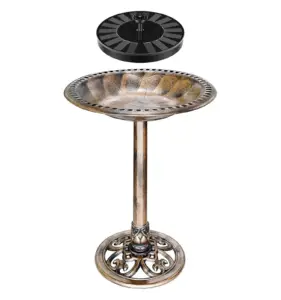
Birdwatching Tips – When and Where to Spot Birds
As an avid birdwatcher, I’ve learned that creating a bird-friendly backyard is just the beginning of your avian adventure. To truly excel in this rewarding hobby, you need to know when and where to look. Here are some essential bird-watching tips to enhance your experience:
Prime Viewing Times
The early bird catches the worm, and the early birdwatcher catches the best sightings. Birds are most active at dawn, making early mornings ideal for observation. Dusk is another prime time, as many species become vocal again before settling in for the night. During migration seasons (spring and fall), you’ll have the opportunity to spot a wider variety of species passing through your area.
Hotspots for Observation
While your backyard can be a great starting point, don’t limit yourself. Local parks, forests, and areas near water sources are excellent spots for birdwatching. Remember, different habitats attract different species, so diversify your locations. City parks can be surprisingly rich in bird life, especially during migration periods.
Essential Equipment
To make the most of your birdwatching excursions, invest in a good pair of binoculars and a field guide. The best bird feeders in your yard can also attract a variety of species for observation. Don’t forget to bring a notebook to record your sightings and observations – it’s a great way to track your progress and learn over time.
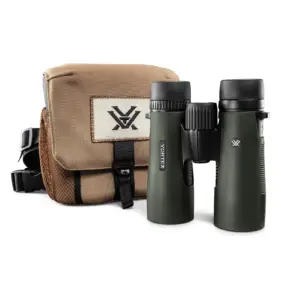
Vortex Optics Diamondback HD Binoculars
Lightweight, high-quality binoculars for birdwatching.
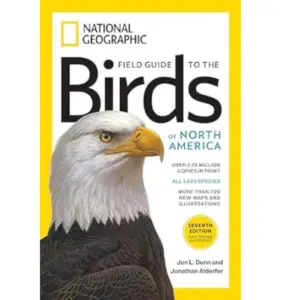
National Geographic Field Guide to the Birds of North America
A helpful guide for identifying species.
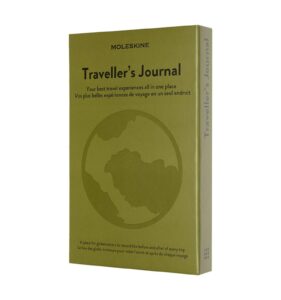
Moleskine Birdwatching Journal
A designated notebook for tracking sightings and making notes.
Top 10 Bird-Friendly Plants for Your Garden
Creating a bird-friendly backyard starts with choosing the right plants. Here are ten native species that will attract a variety of feathered friends to your garden:
Flowering Favorites
Purple Coneflowers (Echinacea spp.) are a must-have for any bird-watching enthusiast. These vibrant perennials not only add a splash of color but also attract butterflies and provide seeds for birds like goldfinches. Pair them with Sunflowers (Helianthus spp.) for a dynamic duo that will keep birds well-fed, especially during migration seasons.
For hummingbird lovers, Cardinal Flower (Lobelia cardinalis) is an excellent choice. Its nectar-rich tubular flowers are irresistible to these tiny acrobats. Complement it with Trumpet Honeysuckle (Lonicera sempervirens) to provide both nectar and fruit for a variety of bird species.
Berries and More
Elderberry (Sambucus spp.) bushes are a powerhouse for bird-friendly backyards. Their dark blue fruits are a favorite among Brown Thrashers and Red-eyed Vireos. For winter interest and food, consider planting Holly or Winterberry. These evergreen shrubs provide essential berries for birds like thrushes and blackbirds during the colder months.
Don’t forget about trees! Oaks (Quercus spp.) offer nesting sites, shelter, and a bounty of insects and acorns. Dogwoods (Cornus spp.) are another excellent choice, providing fleshy fruits that Cardinals, Titmice, and Bluebirds love.
By incorporating these plants into your landscape, you’ll create a haven for birds year-round, enhancing your bird-watching experience and supporting local wildlife.
Conclusion
In conclusion, creating a bird-friendly backyard is a rewarding endeavor that allows me to connect with nature and support local wildlife. By carefully selecting and placing feeders, baths, and native plants, I’ve transformed my outdoor space into a haven for feathered visitors. I’ve learned that consistency, cleanliness, and thoughtful design are key to attracting and sustaining a diverse bird population. As I continue to refine my backyard sanctuary, I look forward to the joy of observing new species and behaviors throughout the changing seasons. With these strategies in place, I’m confident that my efforts will contribute to the well-being of birds in my area for years to come.

